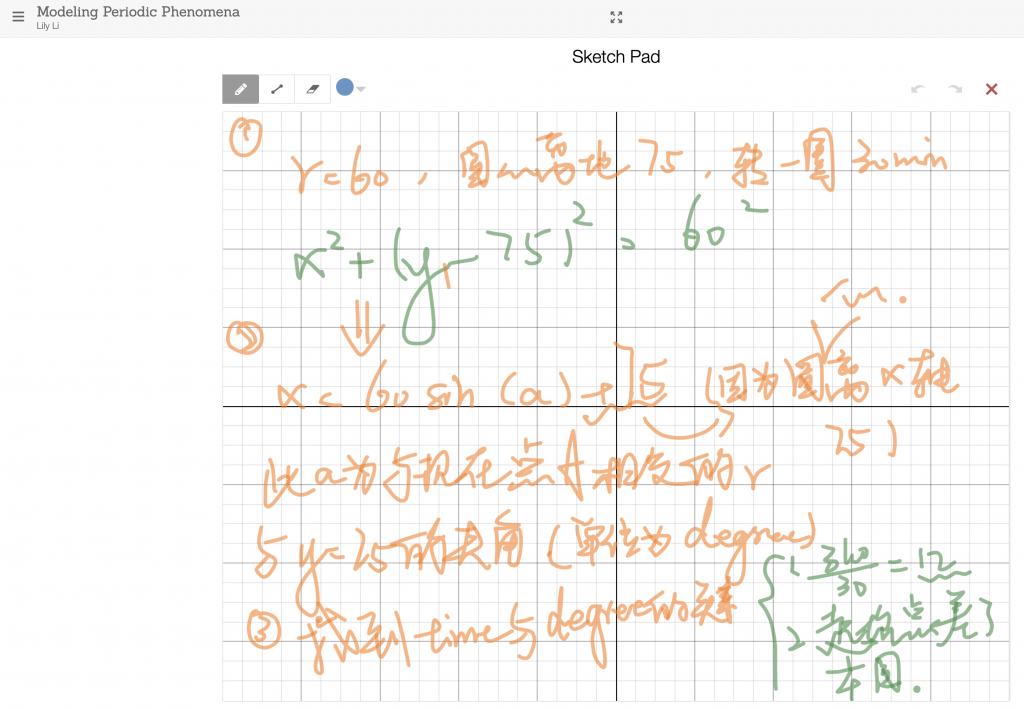Description
This artifact is a final assignment of the introductory social science course, which is finished by myself. And it’s an essay around the question of what means to be a Chinese. This question is the main driving question that leads my whole learning progress in this course. Also, this is my first time learning about the methodology of social science. I’m not good at “writing essays” before, and this artifact is the longest essay I’ve ever done before. Thre’s no doubt that in the working progress I met many troubles such as find out the logic of the outline, but I think I’m already tried my best to learn new knowledge and put efforts on solving them.
All in all, for me, this artifact a nice chance to improve my writing communication skills and a stepping-stone to the logical inference of the theme of social science.
引入
从字面及普遍释义来看,“中国人”在作为带有前缀的身份认同被理解与阐释时,其定义是建立在“中国”这一概念的基础之上的。
“中国”一词,迄今最早来源被发现于何尊中的铭文。从那时起,“中国”这个词汇就已从时间、空间、文化等多重角度被赋予了层叠的多重意义。在当下的日常语境中,“中国人”多指在法律层面拥有中国国籍的自然人,但其可被探究和讨论的意义却并非仅囿于作为政治层面一角而被应用的“称谓”。
在此我将会以一名创新学校学习者的视角,从“溯源”与“展望”两个方向出发——从文化背景的层面,分别探讨历史之于塑造今日“中国人”一词意义的影响,与在此基础上“中国人”在面临当今与未来时局时,基于“中国人”这一身份认同所构建的价值观与思维特性。
- 溯源
提及中国,我们(下文中“我们”一词均指“中国人”)首先会联想到的是五千多年历史中文化的积淀与传承。至于原因,大概是时间确能起到帮助“中国人”塑造更理想的观念与社会结构的作用。中国文化是中国人思想的投射,而探寻中国文化的方式则是回顾中国历史。秉承着这样的观点,以反映中国文化的相关史料为基础,才能理解历史究竟以何种形式建立了我们自我认知中无法抹去的文化背景。
古代, “文明水准”是定义“中国”的主要标准,这一点从“蛮夷”、“戎狄”等称呼上就可见一斑。有观点认为“先秦儒家的‘文野之分’,不免有一种人类文明初始阶段普遍存在的傲慢与自我中心主义的偏见”(1)。其实不然——在我看来,中国本土的“文明”反而是极具包容性的。细读先秦李斯的《谏逐客书》,其中有这样一段推论:“今乃棄黔首以資敵國,卻賓客以業諸侯,使天下之士退而不敢西向,裹足不入秦,此所謂「藉寇兵而齎盜糧」者也。”这正是反驳所谓“非我族类,其心必异”一类观点的有力证明。从历史事实中也可以看到,秦国并非抗拒一切“外族”、排斥一切异于自身的文化——商鞅、百里奚、白起、蒙恬、吕不韦,最初都并非以秦国人的身份生活。相信这也是李斯想要通过《谏逐客书》告诉嬴政的——统一的伟业既是有所谓“外客”的功力凝铸而成,也就并非“逐客”便能稳固。在这样的境况之下,对于四夷的称呼与所谓“文野之分”,就可以被归因于古人认知广度的匮乏了。
只是再包容的“文明”,也大都会有其推崇的“文化样貌”。当前无论是学界或百姓,大部分人对于中国文化“正统性”达成的共识大概是:中国文化的主体与根基源自儒家思想。的确,这一观点从历朝历代对于“周礼”的执着中就可以一见。上段中提及的李斯,他的观点很容易因辅佐嬴政的经历而被第一直觉划分为“法家”的范畴。但事实并非如此——李斯曾师从荀子,如若真要以学派的角度对他的思想进行划分与归类,理应更贴近儒家的范畴才是。其实,儒、道、墨、法、名、阴阳六家分流的概念最初是由司马迁在《太史公自序》中提出的,而不是日常被人们所误解的“自百家争鸣之初,就已有驳杂的流派自立门户”。所谓“百家争鸣”的局面,出现的缘由也只是一群“以天下为己任”的有识之士想要探讨出让世界变得更好的方式而已——无论是所谓“治国之道”还是“做人之本”。具备了这样的认知基础,再抛去那些各家之间延续到今日都未能顺利得出“结论”的观点冲突,例如“人性善恶”、“尊卑秩序”等问题,所谓不同“思想流派”的最大差异也就只有在思维体系上专精方向的不同了。因此,“中国人”群体的底层核心认同、在中国文化不断演化的历史中真正起到中流砥柱之作用的,是中国人共同建立的、对于理想社会形态——“天下大同”的构想。
将“文明的包容性”与“‘天下大同’的理想社会模型”这两个对于中国文化特性的描述合并,就能够看到在其背后起到支撑作用的普世主义观念。从农业社会的基础调性一直历经种种变革直至今日,中国人的普世主义观念向来都在不同外表的社会结构中以“地基”的角色出现。举一个与当今社会关联性较强的具体例子来说,“普世主义观念”的存在甚至为马克思主义在中国的传播奠定了群众认知基础(4)。
综上,即是“中国人”一词,在近代以前的历史演化中由普世主义观念撑起的文化背景。
- 展望
步入近代,中国携其独特的普世主义观念开始进逐渐入世界的视野,自身也同样会受到来自世界多样文明的冲击。难以想象的是,中华人民共和国自建国以来已经过去了七十一年,从时间尺度上来看甚至不及唐朝一个朝代的三分之一,但在各个方面取得的进步与发展却不知已经几倍于唐朝的全盛时期。这些成果一定离不开的,是中国与世界的交互作用。
我出生在对于“中国人”而言毋庸置疑的和平年代,并在这个日新月异的社会中带着五千年来“中国人”前所未有的世局观生活。面对纷杂的观点与交错的未来时,我总会联想到冯友兰先生在《中国哲学史》一书的自序中写道:“值此存亡绝续之交,吾人重思吾先哲之思想,其感觉当如人疾痛时之见父母也(5)。”尽管他在写下“值此存亡绝续之交”时,所处的战乱纷杂的时代背景意义难以于当下被我们再现,这半句前提却可以被我们迁移至对时局的理解:当下正在接受世界多样文明冲击的中国文化,以及“中国人”这个被不断“挑战”的身份认同。
“中国特色社会主义”在日常话题中已是几十年来的热点词汇,而观察“社会主义”之所以能够被“中国化”的原因,正是同回声效应一般借他者定位自身的巧妙切入点。已然通过“溯源”的探索过程获得的文化背景描述成为了基石,那么接下来不得不提及的就是中国人与西方人在思维方式上的差异(6)。Morris的研究表明,文化差异会以无意识的形式对人们的心理与行为产生影响(7)。而针对价值观与价值取向的研究与呈现则是衡量或可视化这种影响的最佳途径。现已有研究结果能够以量化的价值观结构为基础,通过与史料文献的对比作出“当代中国人价值观中‘传统与现代’”并存的初步推断(8)。这样的研究方式在探讨“中国人”意义的语境下非常值得学习,只是推断的描述仍可以更进一步,即尝试去揭示“传统与现代”在当代中国人价值观构成中的互动结构。而对于这种互动结构的认知以及理解方式,则会成为中西方文化交互的具像化表现,进而让“中国人”当下含义中驳杂部分的解释成为可能。
与此同时,西方分科式的教育体系以及同为舶来品的“科学”知识体系已被广泛的接受与应用许久了,如何处理本土与外来文化间的平衡关系,也是亟待我们探索的要务。
总而言之,理清自身文化背景的时代特性,并在对于传统的认知理解基础之上,进行思考和探究——这样的“使命”同样是“中国人”这一饱含文化释义的身份认同所赋予我们的。
结论
作为一名创新学校的学习者,“中国人”这样一个身份认同的意义中则被自己未来可能身处的境遇赋予了更多与“使命与责任”关联的意义。仅从区分“自我”与“他者”的角度出发,我面临着更自由的选择空间与理解自身文化背景的更多面相。而从对于将“中国人”这个身份认同的多层面理解出发,将其所带有的时代性、传承性含义运用在自我认知及日常生活中,就是身为“中国人”的意义。
讨论:视角局限性与仍需进一步思考的问题
首先,值得注意的是:同样拥有“中国人”这一身份认同,却并非拥有中国国籍、公民身份乃至血统的特殊群体不在少数。他们在这个时代面临着的在身份认同与文化认同等认知层面的多重挑战也不容忽视。但正因如此,我无法在上述讨论中一概兼并这样庞杂和极具专业性的学术问题——这也成为了我选择从最熟悉的自身视角与自我认知基础出发进行讨论的原因。
这样看似较为“稳妥”和“严谨”的处理方式,也会带来其独有的局限性问题:在“展望”一部分中就已有提到,我的思维体系是被现代教育系统及诸多具有时代特殊性的环境因素所塑造的,因此也就难免于时代意义上的局限与偏见。除此之外,
目前我能够预见到的,针对这两种问题的切实解决方案可能是拓宽知识面的广度并在所需方面加深认知的深度。
参考文献
- 朱栋荣,闾小波: 从“互鉴”到“序进”:西力东渐时期中国人的世局观,人文杂志,2020年2月,第109页。
- 李斯:《谏逐客书》,秦朝。
- 司马迁:《太史公自序》,汉代。
- 李海文. 中国人民选择马克思主义的传播逻辑,大连海事大学学报,2020年4月。
- 冯友兰:《中国哲学史》,民国二十二年六月,第2页。
- 侯玉波,朱滢 :文化对中国人思维方式的影响,心理学报,2002,34(1):106111.
- Morris M W, Peng K P. Culture and Cause: American and Chinese Attributions for Social and Physical Events. Journal of Personality and Social Psychology, 1994, 67: 949971
- 金盛华,郑建君,辛志勇:当代中国人价值观的结构与特点,心理学报,2009,41(10):10 00—1014












